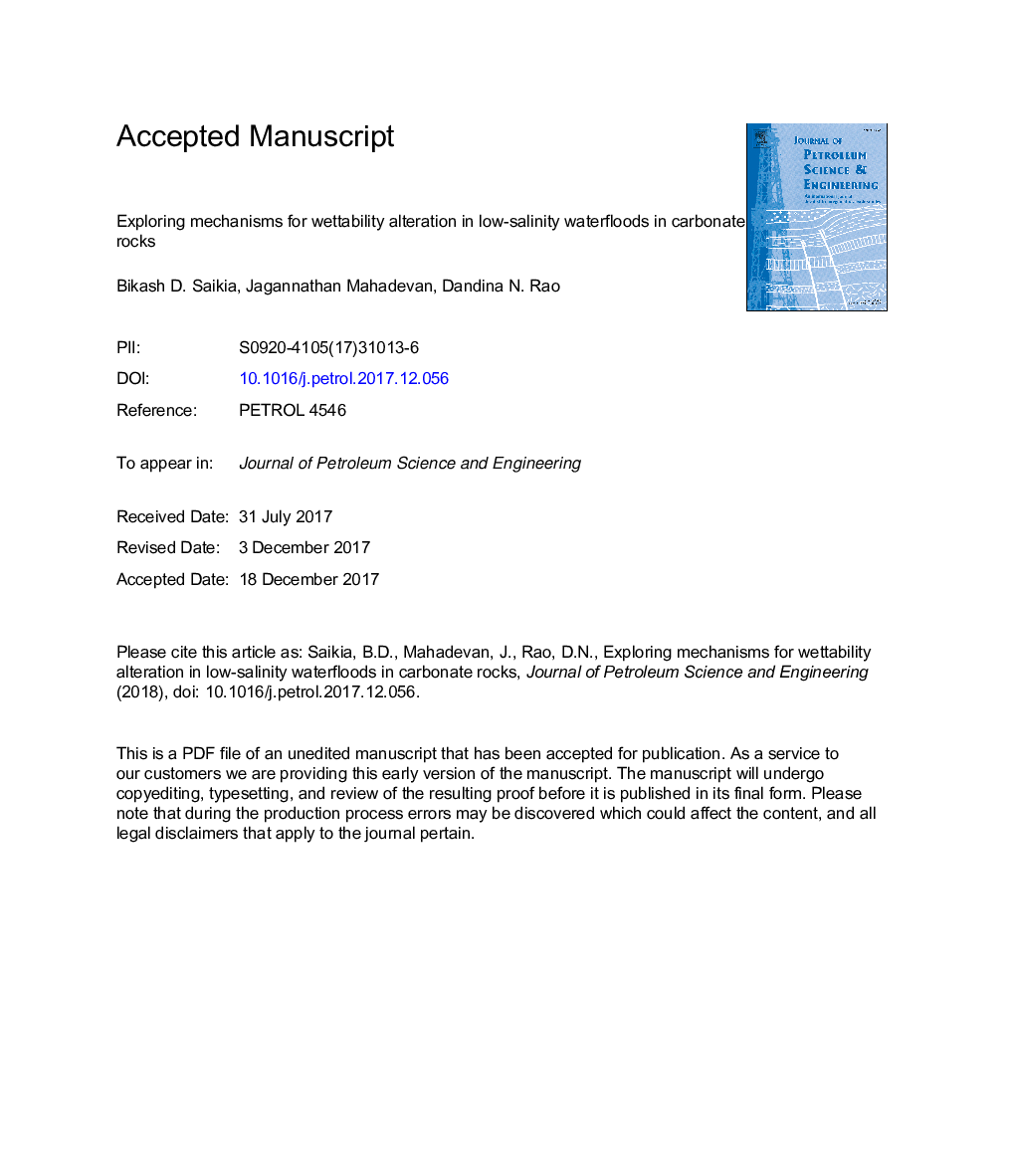| Article ID | Journal | Published Year | Pages | File Type |
|---|---|---|---|---|
| 8125310 | Journal of Petroleum Science and Engineering | 2018 | 24 Pages |
Abstract
Low Salinity waterfloods, even in carbonates, have received a great deal of attention because of their potential to significantly increase waterflood recoveries in addition to being cost effective. Wettability alteration has been found to play a major role in affecting higher recoveries from carbonates in low salinity floods. A large volume of research has accumulated for determining the effect of brine chemistry on wettability alteration and consequent recoveries. Both divalent cations (Ca2+, Mg2+) and anions (SO42â) as well as their interactions have been found to affect wettability. Charges on the mineral surface were also linked to observed wettability change. Despite the efforts, a clear understanding of the mechanisms for such wettability changes seems to be still elusive. Here in our work, first we have attempted to find viable alternatives for sulfates which pose fouling risks for reservoirs. Sulfur oxyanions such as bisulfites and metabisulfites have been found to be potential anions capable of affecting the desired wettability change without the risk associated with sulfates. Secondly, an effort has been made to understand the mechanism (s) behind such wettability alteration in carbonates during low salinity waterfloods based on our work and that by various authors. A potential mechanism has been proposed for wettability alteration, which seems to explain the works of many researchers. The mechanism is based on the isoelectric point of the carbonate rock surface, pH and interfacial energy between the aqueous brine solution and the rock surface. It is proposed that carbonates would be strongly oil-wet at the isoelectric point of the carbonate rock crystal, when the aqueous solution-rock interfacial tension is maximum. On the other hand, it would exhibit more water-wet or less oil-wet behavior, the further the pH of the brine solution is away from the isoelectric point of the carbonate rock. The wettability change is as a result of electrostatic attraction between polar water molecules with the charged surface that helps to bring down the brine-rock interfacial energy. This minimization of interfacial energy is manifested as the wettability change at the 3- phase carbonate mineral-oil-water contact line. The shift in the isoelectric point due to changes imposed in brine composition needs to be accounted for in addition to brine pH and salinity in order to optimize recoveries from low-salinity waterfloods.
Related Topics
Physical Sciences and Engineering
Earth and Planetary Sciences
Economic Geology
Authors
Bikash D. Saikia, Jagannathan Mahadevan, Dandina N. Rao,
